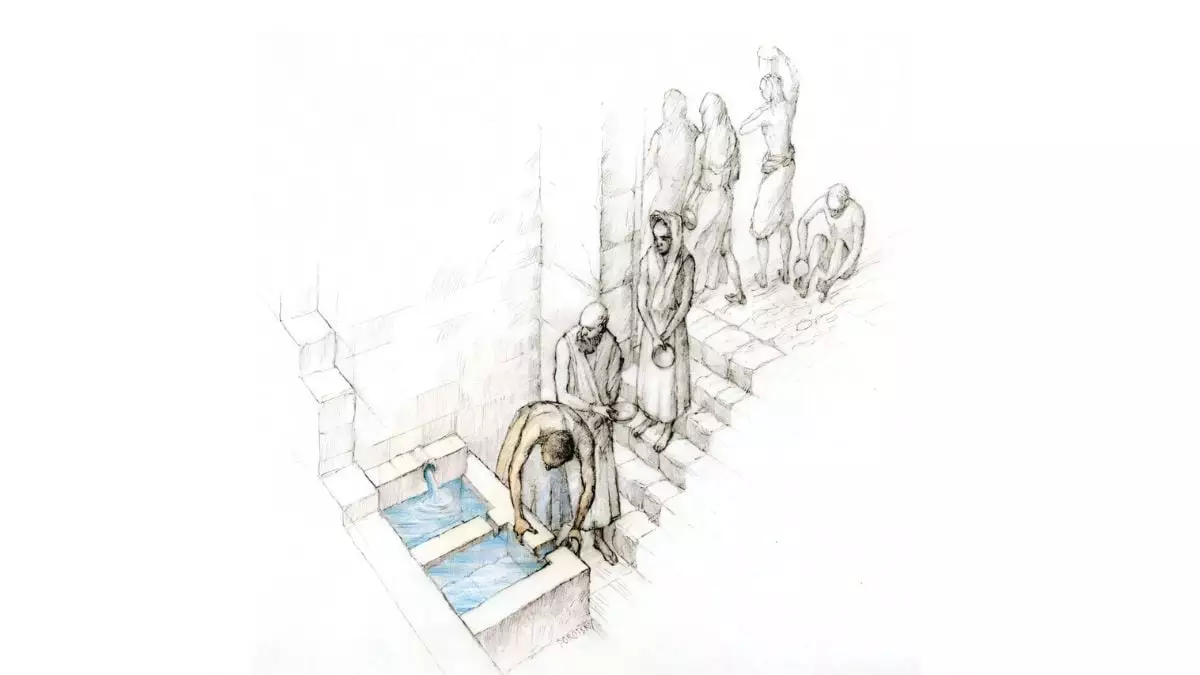In a noteworthy archaeological discovery in northern Israel, a recently excavated sanctuary reveals how integral ritual cleansing was in the religious practices of the ancient kingdom of Israel. The find not only highlights the importance of water in sacred traditions but also shapes our understanding of Near Eastern spirituality, particularly in the context of city-centric deity worship. At the heart of this sanctuary lies a unique bathhouse that was evidently used by priests—a reflection of the elaborate and deeply symbolic nature of their religious duties.
The Design of Ritual Purification
The meticulous design of the bathhouse speaks volumes about the cultural emphasis on purification. Diggers unearthed two distinct spaces within the structure: one room adorned with yellow plaster that likely served as a dressing area, and another room painted in blue plaster that featured a basin. These elements are not just aesthetic; they signify a spiritual process where water became a conduit for the sacred. Unlike traditional full-immersion baths, the basin’s compact size suggests a pragmatic approach—worshippers stood to wash in cool spring water, exemplifying a blend of practicality and spirituality that characterizes the rituals of purity from this era.
Historical Context and Significance
The discoveries at the site, which align with scholarly reports from experts like Dr. Levana Tsfania-Zias, provide an exciting glimpse into the religious architecture of the time. The sanctuary’s design recalls the layout of well-known ancient temples, featuring a tripartite structure that includes significant sections for worship and a holy of holies. Interestingly, inscriptions discovered in 1976 suggest the worship of named deities, though the ambiguity surrounding these identities reflects broader issues of syncretism and cultural exchange across the Near East.
As history often reveals, the passage of time can alter or obscure understanding. After the Seleucid destruction of the first temple, the establishment of a second sanctum maintained the practice of ritual bathing—indicative of the enduring importance of these rites. However, it is the later iterations of the site, particularly during the Roman period, that speak to its wider spiritual resonance, transformed into a pilgrimage destination where cleansing rituals were pivotal.
Implications for Modern Understanding
Far from being mere historical curiosities, these ancient sites hold contemporary relevance. They challenge us to contemplate the intersections of faith, ritual, and community. The combination of imported pottery and multilingual inscriptions found at the sanctuary suggests significant cultural interaction and pilgrimage—elements that touch on the universality of human spirituality across time and space.
Dr. Tsfania-Zias’s assertion that the site was a major attraction for both locals and visitors shines a light on the need to explore deeper for more unearthing—what other deities venerated here, and what practices enveloped this hallowed ground? The quest for knowledge and understanding in the academic pursuit parallels the human endeavor for connection and meaning, urging us to look beyond the artifacts toward the people and the sacred paths they walked.
In a world often shallowly connected, we find in this sanctuary a wellspring of insight—a reminder that even in the sands of time, the spirit of inquiry and devotion persists, inviting us to engage deeply with the ancient wisdom that still speaks to us today.

Leave a Reply